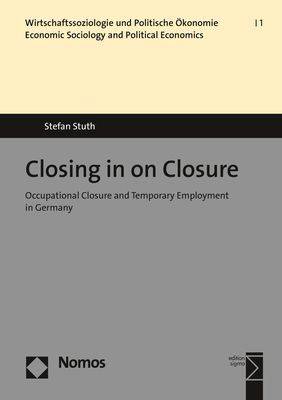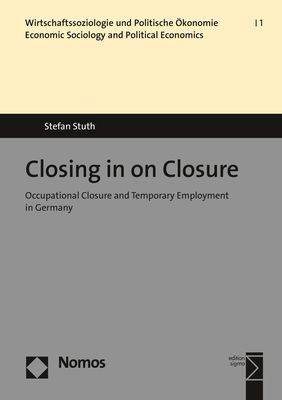
Door een staking bij bpost kan je online bestelling op dit moment iets langer onderweg zijn dan voorzien. Dringend iets nodig? Onze winkels ontvangen jou met open armen!
- Afhalen na 1 uur in een winkel met voorraad
- Gratis thuislevering in België vanaf € 30
- Ruim aanbod met 7 miljoen producten
Door een staking bij bpost kan je online bestelling op dit moment iets langer onderweg zijn dan voorzien. Dringend iets nodig? Onze winkels ontvangen jou met open armen!
- Afhalen na 1 uur in een winkel met voorraad
- Gratis thuislevering in België vanaf € 30
- Ruim aanbod met 7 miljoen producten
Zoeken
Closing in on Closure
Occupational Closure and Temporary Employment in Germany
Stefan Stuth
Paperback | Engels | Wirtschaftssoziologie und Politische Ökonomie | Economic Sociology and Political Economy | nr. 1
€ 39,45
+ 78 punten
Omschrijving
There is now ample evidence of a rise in 'non-standard work arrangements' in many industrialised economies, yet only rarely does theoretical and empirical work probe the question of why the risk of temporary employment varies. Focusing on temporary employment, the author extends the scope of closure theory to an entirely new domain. He develops new and highly sophisticated measures with which to document occupational closure by measuring the scarcity of credentials for particular types of occupations and how effectively these credentials signal quality to potential employers. Similarly, by measuring the degree of task specialisation and the uniqueness of the occupations' tasks, this work exceeds previous studies in breadth and precision. These new measures allow the author to demonstrate how professions protect their employees from temporary employment contracts.
Specificaties
Betrokkenen
- Auteur(s):
- Uitgeverij:
Inhoud
- Aantal bladzijden:
- 193
- Taal:
- Engels
- Reeks:
- Reeksnummer:
- nr. 1
Eigenschappen
- Productcode (EAN):
- 9783848737222
- Verschijningsdatum:
- 5/05/2017
- Uitvoering:
- Paperback
- Formaat:
- Trade paperback (VS)
- Afmetingen:
- 147 mm x 208 mm
- Gewicht:
- 249 g

Alleen bij Standaard Boekhandel
+ 78 punten op je klantenkaart van Standaard Boekhandel
Beoordelingen
We publiceren alleen reviews die voldoen aan de voorwaarden voor reviews. Bekijk onze voorwaarden voor reviews.











